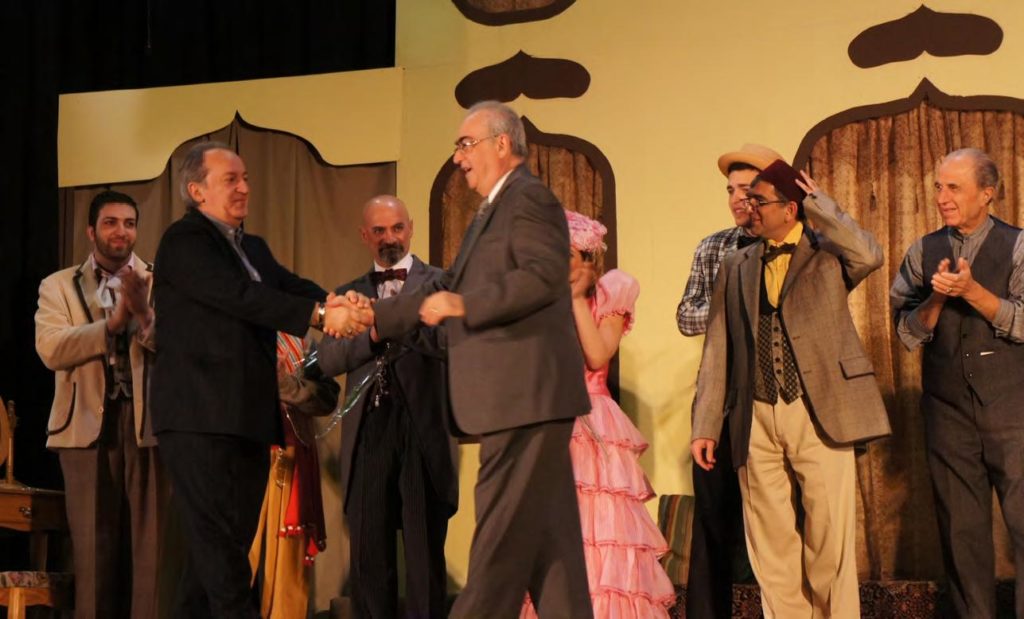By Aram Arkun
Mirror-Spectator Staff

ORADELL, N.J. — The Tekeyan Cultural Association (TCA)’s Mher Megerdchian Theatrical Group performed Hagop Baronian’s play “Shoghokorte” (“The Flatterer”) on November 20 and 21 at the Oradell Elementary School in New Jersey. The performances were dedicated to the well-known actor and director Krikor Satamian, whose 50th jubilee of involvement in Armenian theater was honored by the group afterwards at a banquet on the evening of November 21 at the Clinton Inn Hotel, in Tenafly.
“Shoghokorte” is a type of farce which on the surface concerns misplaced or unrequited love. Most of the characters pine for people who do not love them. While they self-absorbedly pursue their objects of affection, they create obstacles for a pair of young lovers, Dikran and Sofi (Sophie), who manage to overcome everything to become united by the end of the play. Author Hagop Baronian (1843-1891) never completed this play, which was instead done later by the satirist Yervant Odian.
The characters’ foibles reveal, in an exaggerated and comic fashion, some of the problems of 19th- entury Ottoman- Armenian society. Two older and presumably rich characters, a brother and sister named Tateh and Theresa, lord it over their servant Partem while attempting respectively to win over Sofi and Arshag, their much-younger objects of affection. Arshag, a poet, arrogantly considers himself superior to everyone else because of his art, though he is a buffoon without talent. Sofi and Dikran are afraid Hovsep, Sofi’s father, would not accept Dikran as a son-in-law because of his poverty, therefore they connive to convince Hovsep that there is a lawsuit against him which only Dikran, a lawyer, could solve. Arshag happens to visit Hovsep when the latter was told to expect this lawyer. This leads Hovsep to think that Arshag is the lawyer who can save him, and so he is ready to give his daughter in marriage to the latter. Meanwhile, throughout the play, Babig intervenes as the flatterer. He agrees with everybody, no matter what they say, and consequently encourages their conflicts with those around them.
This production of “Shoghokorte” was transformed into a semi-musical, with characters periodically dancing and singing to express their feelings. Concert pianist Oksanna Assirian, a graduate of the Tchaikovsky School of Music and the Yerevan Gomidas State Musical Conservatory, accompanied the singers and provided additional musical background.
Stepan Loussigian composed original music for the play, while Harout Barsoumian (Barsoumian Productions) prepared its soundtrack. The music shifted between Middle Eastern tunes suitable, for example, for a belly dancer, to European melodies.








